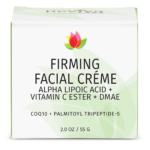Sterols
Solid alcohols from animals or plants. They are usually not toxic.
Sterol is an organic compound with formula C
17H
28O, whose molecule is derived from that of gonane by replacement of a hydrogen atom in position 3 by a hydroxyl group. It is therefore an alcohol of gonane. More generally, any compounds that contain the gonane structure, additional functional groups, and/or modified ring systems derived from gonane are called steroids. Therefore, sterols are a subgroup of the steroids. They occur naturally in most eukaryotes, including plants, animals, and fungi, and can also be produced by some bacteria (however likely with different functions). The most familiar type of animal sterol is cholesterol, which is vital to cell membrane structure, and functions as a precursor to fat-soluble vitamins and steroid hormones.

| |
| Names | |
|---|---|
| IUPAC name
2,3,4,5,6,7,8,9,10,11,12,13,14,15,16,17-hexadecahydro-1H-cyclopenta[a]phenanthren-3-ol
| |
| Other names
Hexadecahydro-3H-cyclopenta[a]phenanthrene-3-ol
| |
| Identifiers | |
3D model (JSmol)
|
|
| ChemSpider | |
| KEGG | |
PubChem CID
|
|
| |
| |
| Properties | |
| C17H28O | |
| Molar mass | 248.410 g·mol−1 |
Except where otherwise noted, data are given for materials in their standard state (at 25 °C [77 °F], 100 kPa).
| |
While technically alcohols, sterols are classified by biochemists as lipids (fats in the broader sense of the term).










